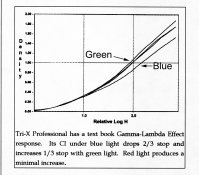How do you control the exposure of your ESECO Speedlight SL-2, if I may ask? I was hoping to use it with both 400 and 100 film, and it would be great if I could get the entire set of steps, except for the first one or two, exposed enough to read a density above fb+f. Do you use filters, multiple exposures, or a modification of some sort?
There is a trimmer resistor for each color. The two units I'm using came 'factory calibrated' and I don't see a good way to set the trimmer back after changing it, so I have not altered these units.
There is some extra density material over the LEDS that could be removed to move the step wedge exposures when exposing slower film.







